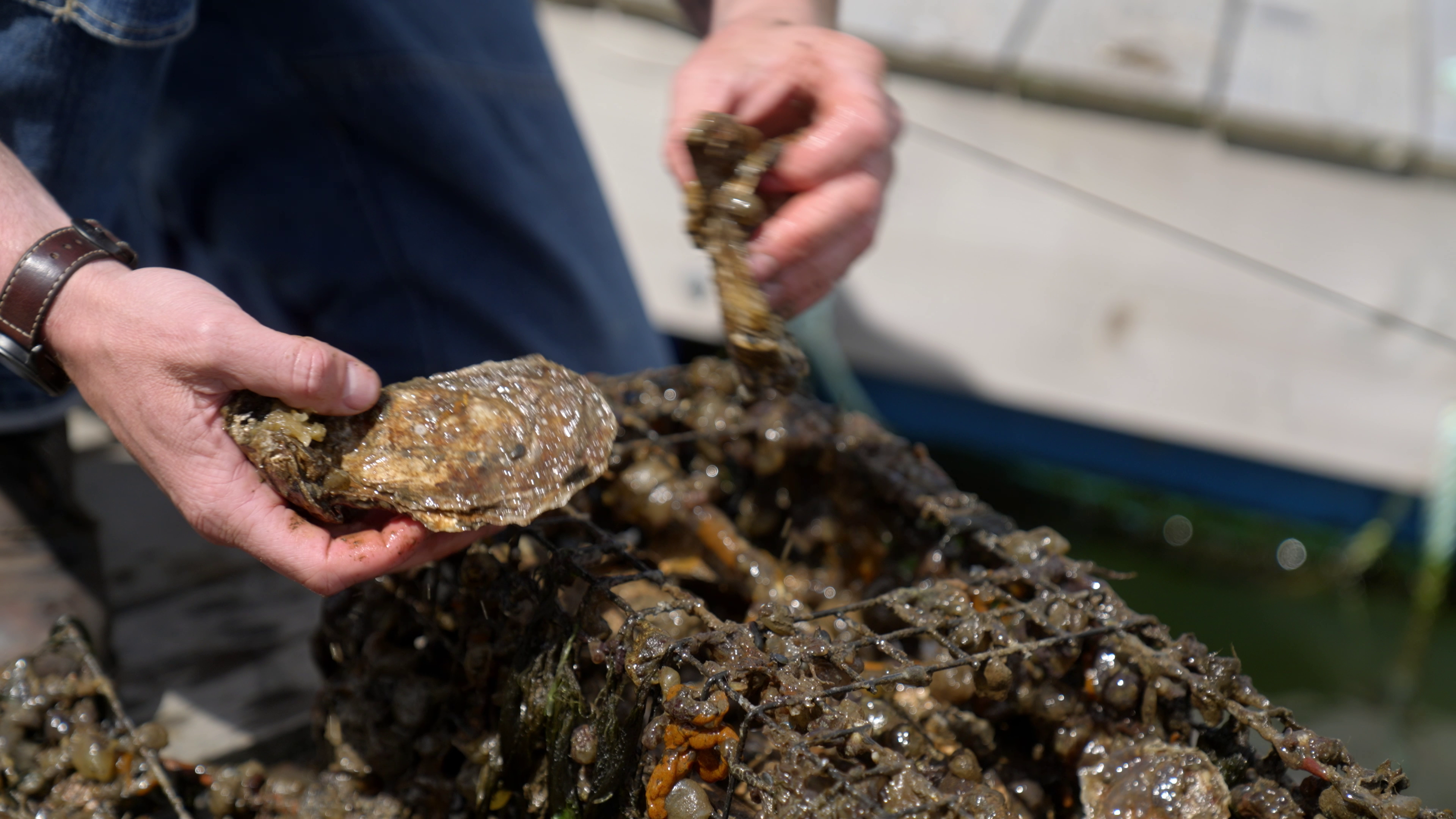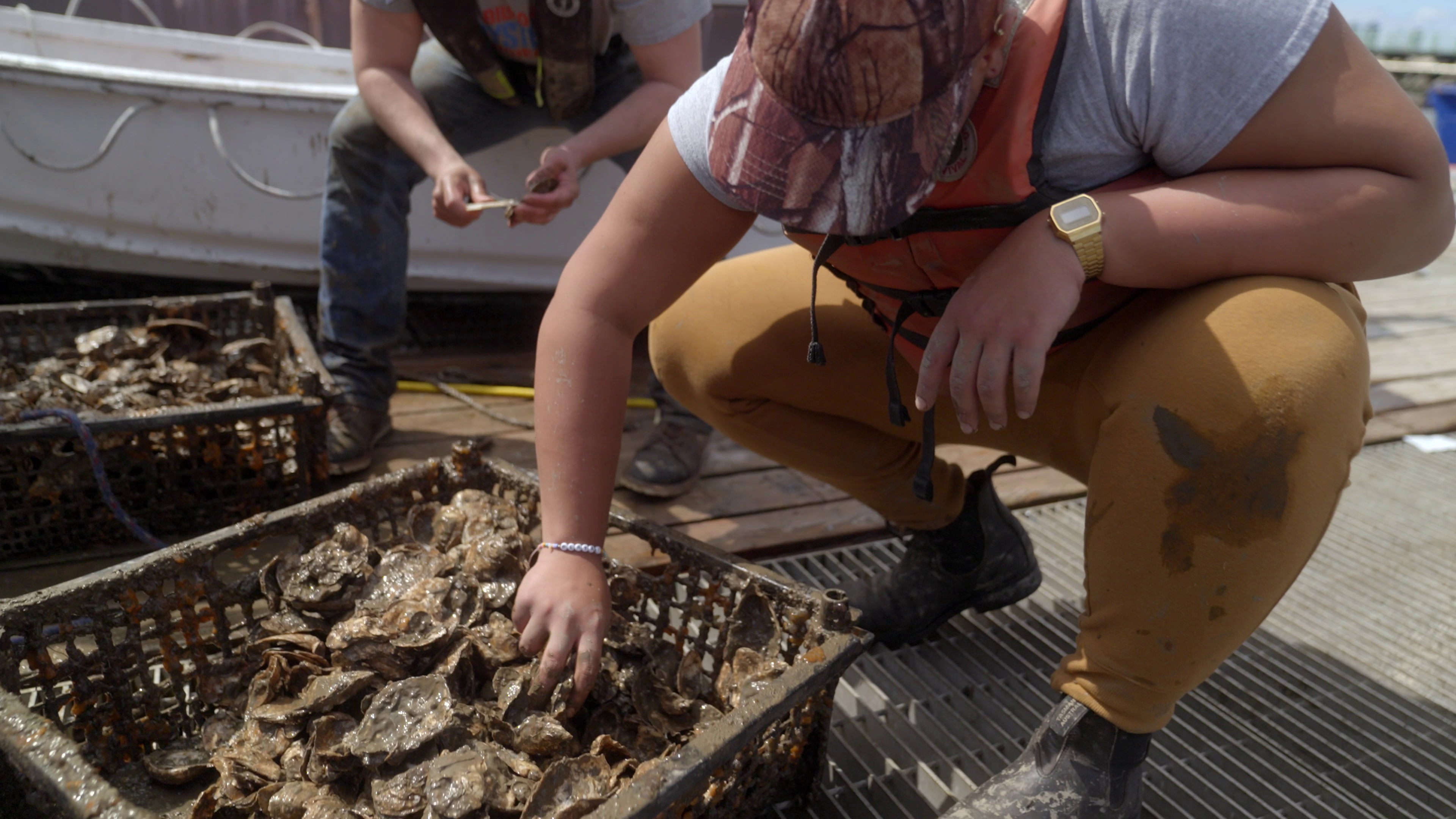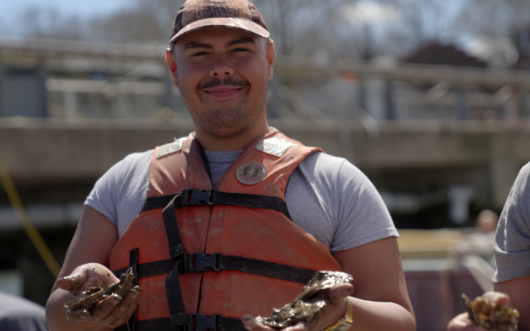Bring biodiversity, oysters, and community-driven conservation into your classroom.
Explore how New Yorkers are working to restore wild oysters and revive New York Harbor’s ecosystem, and how these efforts protect both people and wildlife. This educator guide supports classroom discussion, NGSS-aligned learning, and hands-on opportunities for student engagement.
GRADES: 9 – 12+
SUBJECTS: Biology, Storytelling, Ecology
Episode Overview
The Big Oyster highlights New York City’s ambitious effort to restore wild oysters to its harbor. Once home to vast reefs, the harbor suffered centuries of pollution, but a citywide movement—spanning students, biologists, architects, restaurateurs, and thousands of residents—is bringing this keystone species back. Oysters filter water, support marine biodiversity, and even help shield the city from storm surges through projects like Living Breakwaters, which combines reef structures with living oysters to adapt to rising seas. The film explores how community-driven conservation and innovative design can help restore ecosystems, protect cities, and inspire future environmental stewardship.
Discussion Questions
- (Before the film) Ecosystem services, ways in which humans benefit from ecosystems, are essential for human health and well-being. Examples include when bees pollinate crops or when wetlands clean water. What ecosystem services do you think are provided by oysters?
- What is a keystone species, and why are oysters an example of one?
- Create a conceptual model that illustrates how restoring oysters to New York Harbor might affect wildlife
- biodiversity, water quality, and the New York shoreline.
- Describe three specific species that could benefit from restoring oysters.
- Collaboration between different people and groups is essential for effective conservation. Describe some specific examples of collaboration in the film and how they have been successful.
Key Concepts
- Ecosystem Engineers: Organisms that directly or indirectly create, modify, or maintain habitats.
- Ecosystem Services: Ways in which humans benefit from ecosystems. Ecosystem services are essential for human health and well-being.
- Keystone Species: A species that has a disproportionately large effect on its environment relative to its abundance.



